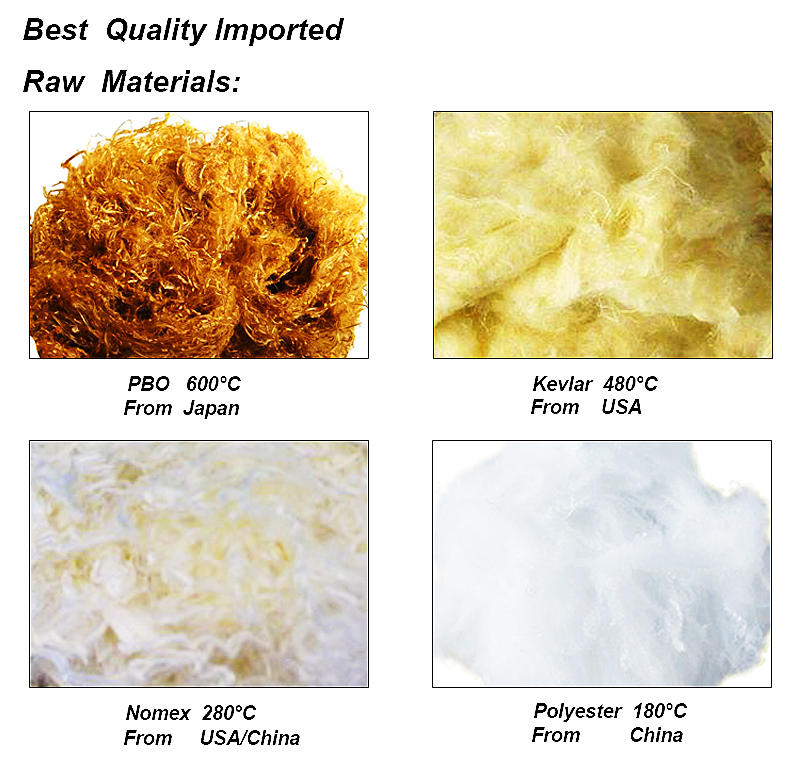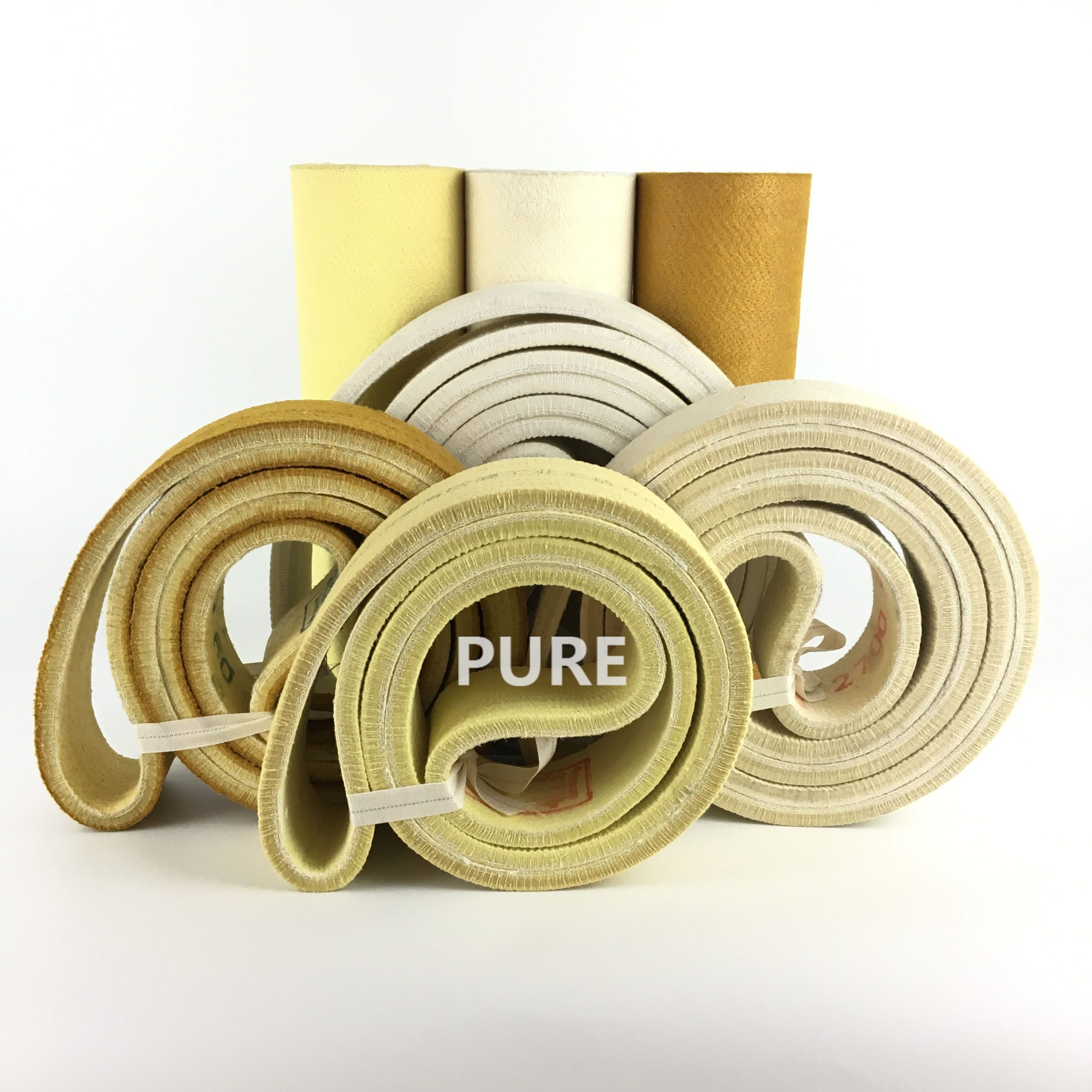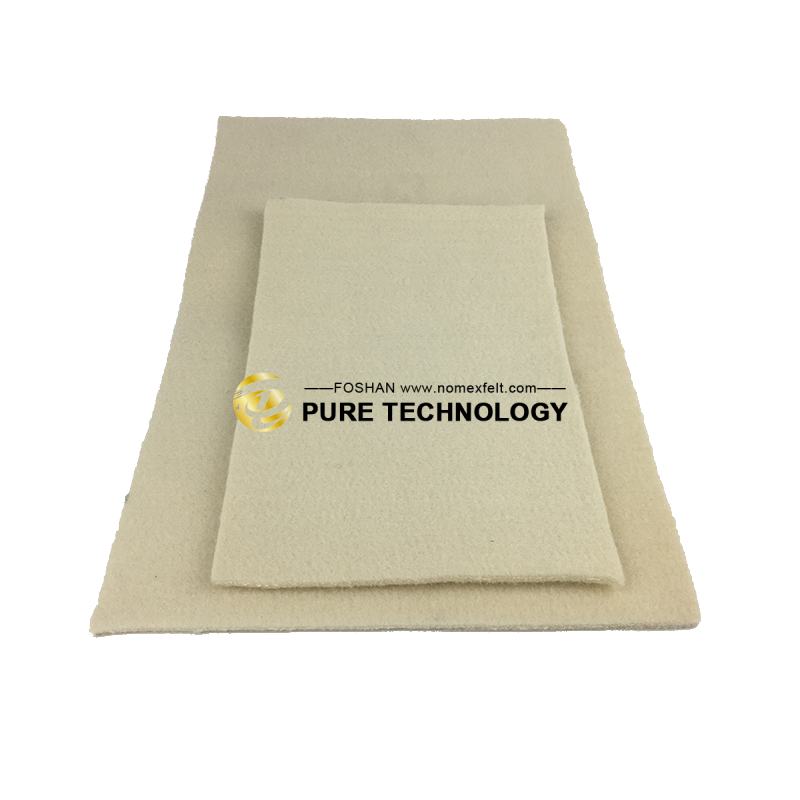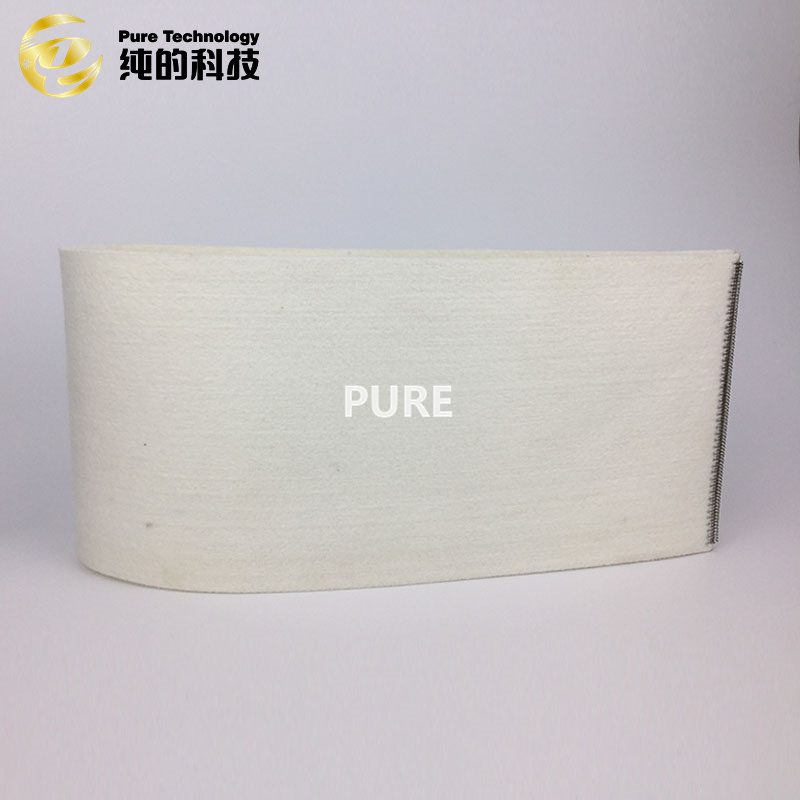The use of industrial felt is everywhere in life; many equipment products have their figure, but many people do not know its value. Today, let me tell you about it in detail.
Industrial felt is a non-woven fabric made of natural or synthetic fibers (PBO, Kevlar, Nomex, Polyester) through non-woven processes such as shrinking, needle punching, or chemical bonding.
It has high elasticity, wear resistance, and high temperature resistance, and it is widely used in machinery, automobiles, electronics, medicine, and other fields.
Unlike woven synthetics, felt’s anisotropic structure enables: Isotropic thermal conductivity (0.05 W/m·K) for uniform heat distribution.
Vibration absorption in mechanical supports (85% energy absorption) Customized porosity (5–200 µm) for applications ranging from sound insulation to microfiltration.
It covers dozens of industries, including automobiles, energy, construction, military industry, and medical care, and is a key component of basic industrial materials.
The global industrial felt market will be worth about $12 billion in 2023, with a market growth rate of 6.9%. It is mainly driven by new energy (such as lithium battery separator felt) and environmental protection industries.
China accounts for more than 40% of global production capacity, but high-end products (such as high-temperature resistant graphite felt) still rely on imports.
High-performance fiber application: High-temperature resistant materials such as carbon fiber and ceramic fiber improve the ultimate performance of felt (such as use in a high-temperature environment of 1600°C).
Functional composite: Through coating or blending technology, the felt is given additional functions such as conductivity, flame retardancy, and antibacterial.
Intelligent manufacturing: AI-driven needle punching process optimization improves material uniformity and production efficiency.
Synthetic fibers: Polyester (PET), Polypropylene (PP), Aramid (Nomex®, Kevlar®) or recycled fibers.
Blends: Mixing natural and synthetic fibers to optimize cost and performance.
A carding machine is used to align the fibers and form a uniform web, ensuring uniformity of the base fabric’s warp and weft tension, length, and yarn count under strictly controlled temperature and humidity conditions.
The fibers are then fed into a bale opener or pneumatic feeder to separate clumps.
In the final stage of carding, the needle loom barb needles pass vertically through the web, entangle the fibers, and pierce the fibers into a high temperature felt layer.
The fiber enters the web laying machine, and the robot automated web laying system precisely controls the fiber delivery path to achieve a uniformity of ±1.5% in weight.
The toothed belt drives the web laying trolley to cross-fold the single web of high-frequency folded fibers.
It relies on dynamic tension coordination technology to form a multi-layer web with the required width and unit weight, meeting the high-performance requirements of aluminum, textile, and other fields.
The product can be treated with full resin or semi-resin to improve its wear resistance and durability, and prevent aluminum chips or dirt from adhering to the heat resistant felt, reducing damage to the surface of the aluminum profile.
The product adopts a precision cutting system, combined with laser-assisted positioning and hot-melt edge sealing synchronous process to produce borderless industrial felt (width error ≤ 0.15mm), and the size can be customized according to your needs.
All finished products are inspected by our professional quality inspectors using metal detectors to ensure that there are no broken needles in the finished products.
Before delivery, they are tested for thermal stability, chemical corrosion resistance, density, tensile strength, and other values to ensure that the porosity deviation is controlled within ±1.5%.
As a Professional felt supplier, our production system has passed ISO 9001:2008 quality management certification, and traceable samples are retained for each batch of products.
The current varieties of felt points: special felt, ordinary felt. The difference is to divide by the thickness of the hair, the size of the density, and the color difference; Technical requirements are according to the strength, elongation, capillary action to divide, the use of units can be selected according to the need. We can inspect the goods according to this standard when we inspect them.
The following is a performance comparison of industrial felt made of four fibers: PBO, Kevlar, Nomex and Polyester, covering physical, chemical and other key properties:
|
Performance indicators |
PBO felt |
Kevlar felt |
Nomex felt |
Polyester felt |
|
Tensile strength |
★★★★★ |
★★★★☆ |
★★★☆☆ |
★★☆☆☆ |
|
High temperature resistance |
★★★★★(>600℃) |
★★★☆☆(500℃) |
★★★★☆(280℃) |
★★☆☆☆(180℃) |
|
Flame retardant |
★★★★★(LOI 68) |
★★★★★(LOI 29) |
★★★★☆(LOI 28) |
★☆☆☆☆(LOI 20-23) |
|
Chemical resistance |
★★★★☆(Strong acid and alkali resistance) |
★★★☆☆(Resistant to weak acid, not resistant to strong alkali) |
★★★☆☆(Weak acid and alkali resistance) |
★★☆☆☆(Resistant to weak acid, not resistant to strong alkali) |
|
Wear resistance |
★★★★★ |
★★★★☆ |
★★★☆☆ |
★★☆☆☆ |
Usage of industrial felt: can be used in the built-in materials of household appliances, such as tape recorders, computers, cameras, microwave ovens, and air conditioners, etc.
In the mechanical aspect, it can be used in aluminum, textile, laundry, steel, motor equipment, gas masks, refrigeration machines, and semiconductors. Not only that, in the automobile and sports equipment, stationery, and other fields, they are also widely used. It’s very important material.
During the transportation of aluminum materials on the aluminum extrusion cooling bed, the Para-aramid belt covers the surface of the aluminum materials to prevent scratches or oxidation;
It is used to isolate the aluminum strips in the aging furnace to prevent mutual collision and protect the aluminum materials. In a 2023 technical transformation project of a global aluminum group, the application of industrial felt reduced the product defect rate by 60-65%.

In the heat transfer process, felt acts as an intermediate buffer layer to ensure even heat distribution and prevent local high temperature from damaging the fabric. In Heat press sublimation printing or digital sublimation printing
Nomex felt pad sublimation ensures even printing pressure through elastic buffering to avoid blurred or missed patterns, while absorbing excess ink to prevent infiltration and contamination of the equipment.
When pleating clothing or home textile fabrics, it protects the fabric from high temperature burns or indentations, ensures that the shape of the pleats is uniform and consistent, and improves the durability of the shaping.

The Laundry flatwork Ironer Belts can keep the ironing surface flat and stable during the ironing process, improve the efficiency and quality of ironing, and prevent the ironing objects from being damaged or burned by the heat of the roller.
At the same time, it also helps to remove wrinkles on the surface of the fabric.

In the cold rolling/hot rolling production line, the felt tension pad is installed on the knife frame of the steel plate cutting machine as a buffer layer.
It evenly disperses the contact pressure between the steel plate and the knife frame to avoid scratches on the steel plate surface or wear on the knife frame.
Industrial felt has high elasticity due to its fiber needle-punched structure and is suitable for shockproof, sealing and cushioning scenarios, such as mechanical gaskets, electronic equipment protection, etc..
Its tight pore structure and wear resistance make it a polishing material and high-efficiency filtration medium, suitable for mechanical processing, oil filtration and other fields.
Its natural properties give it excellent thermal insulation performance, making it suitable for high-temperature industrial environments (such as 500°C Para-aramid roller sleeve that can be used in the production process of aluminum profiles). The demand in new energy vehicles, environmental protection equipment and other fields has surged, and the market size has gradually expanded.
Small and medium-sized enterprises have backward technology and rely on traditional production models. Their product stability is insufficient and there is a certain gap with international standards.
The prices of aramid and nomex fibers are greatly affected by the international market, which increases the cost pressure of enterprises.
The industry’s R&D funds are far lower than other products, which restricts the development of high-performance products.
Technological innovation: Increase R&D investment to develop functional felts such as high temperature resistance (>600℃) and corrosion resistance to meet the needs of new energy vehicles, semiconductors and other fields.
Green transformation: Promote renewable raw materials and closed-loop production processes to respond to the “dual carbon” policy.
Market diversification: Expand the markets of countries along the “Belt and Road” and deepen cooperation with the automotive and environmental protection industries to reduce the risk of dependence on a single industrial chain.
Industrial felt has potential in both traditional and emerging fields due to its unique properties and economy, but it needs to break through technical bottlenecks and external challenges to achieve high-quality development.
Contact Information
Pure linkendin:linkedin.com/nomexfelt
As we know, Heat Transfer Printing Felt is suitable for fabrics, decorative fabrics, curtains, le...
Read Safety Rules for Laundry Management to be a qualified manager. PARTⅠ Laundry room Safety Gen...
The extrusion machine is the leading equipment for the production of aluminum profiles. The quali...
Heat transfer printing is a contemporary printing process in the clothing market. It prints the p...
In the textile industry, felt is only a small part but important. About how to choose felt that i...
Foshan Pure Technology Company., Ltd. helps conveyor belt manufacturers source equipment to metal...
Nomex, an intermediate aramid, also known as aramid 1313. It is characterized by good heat resist...
In the 1960s, the Dupont developed a kind of aramid composite material, it is Kevlar. It has very...